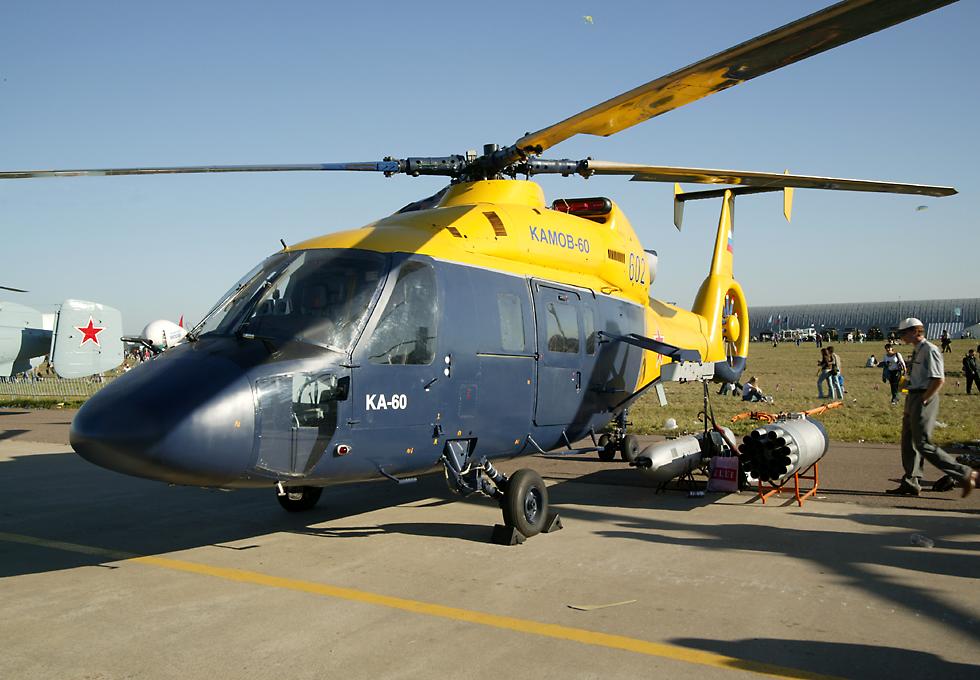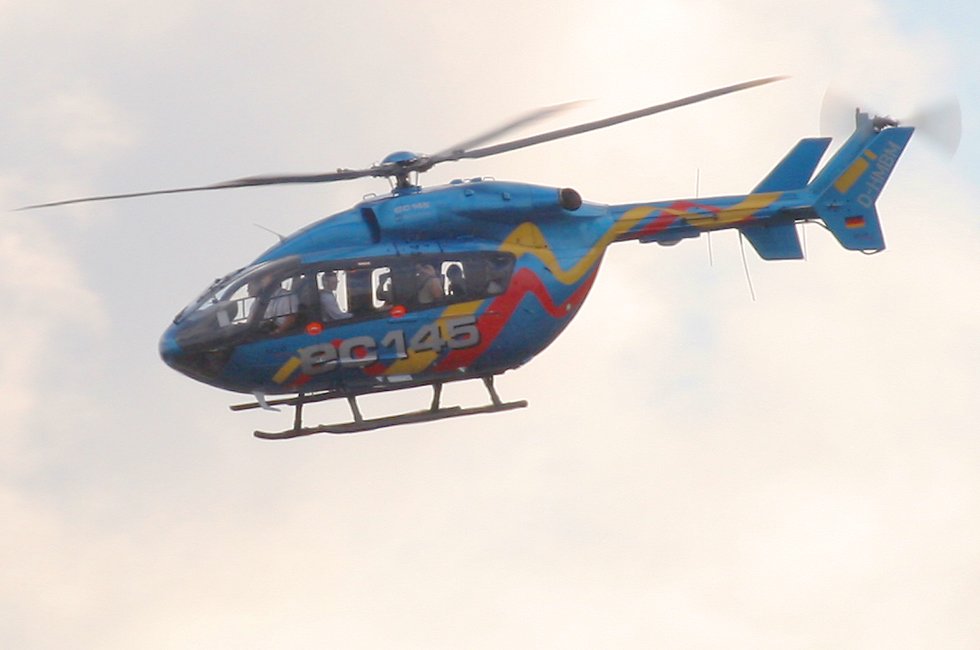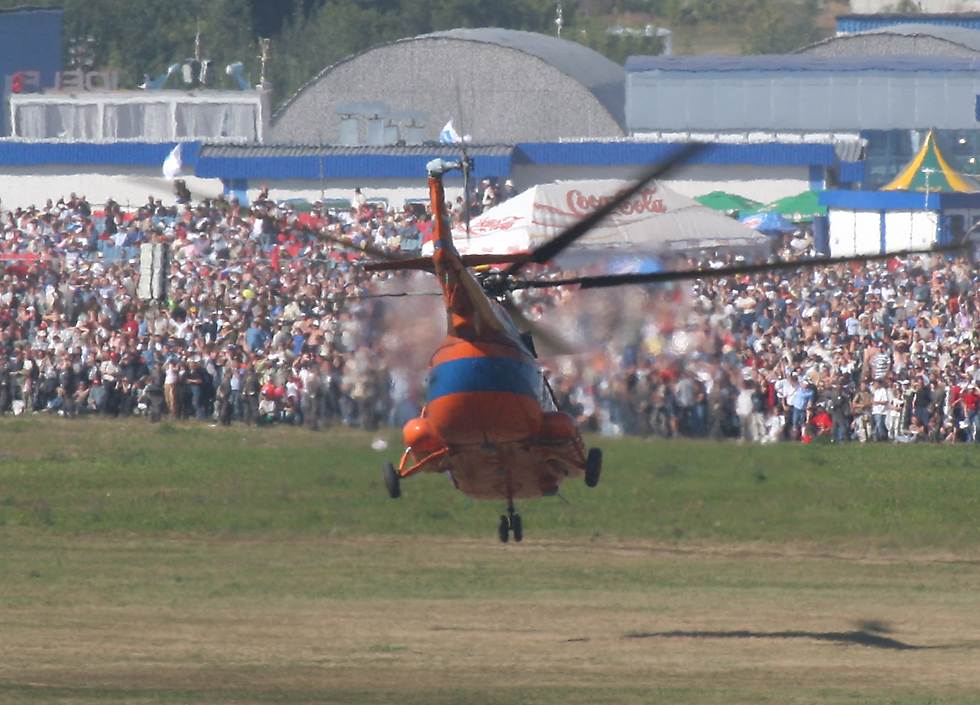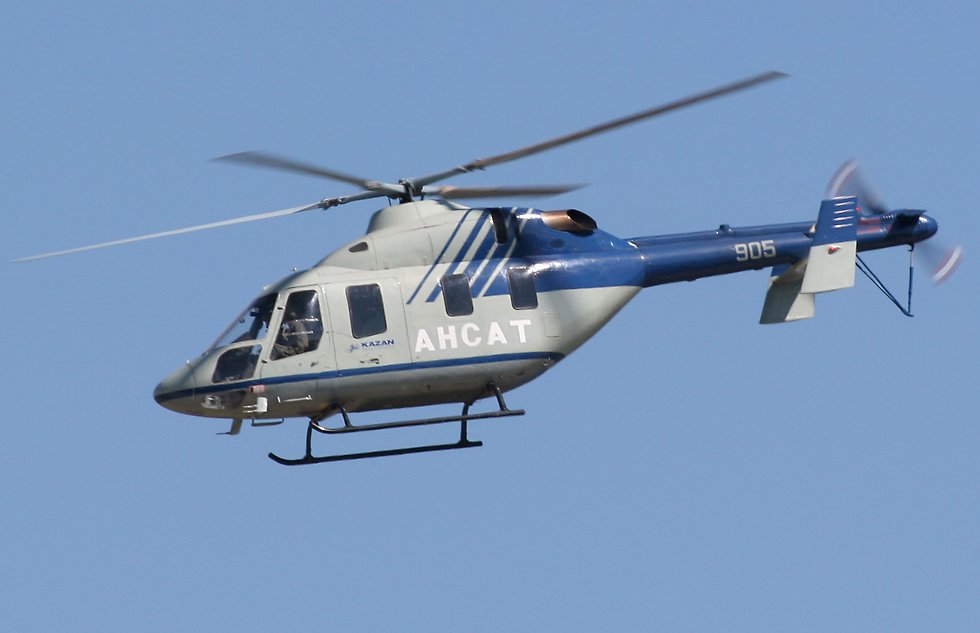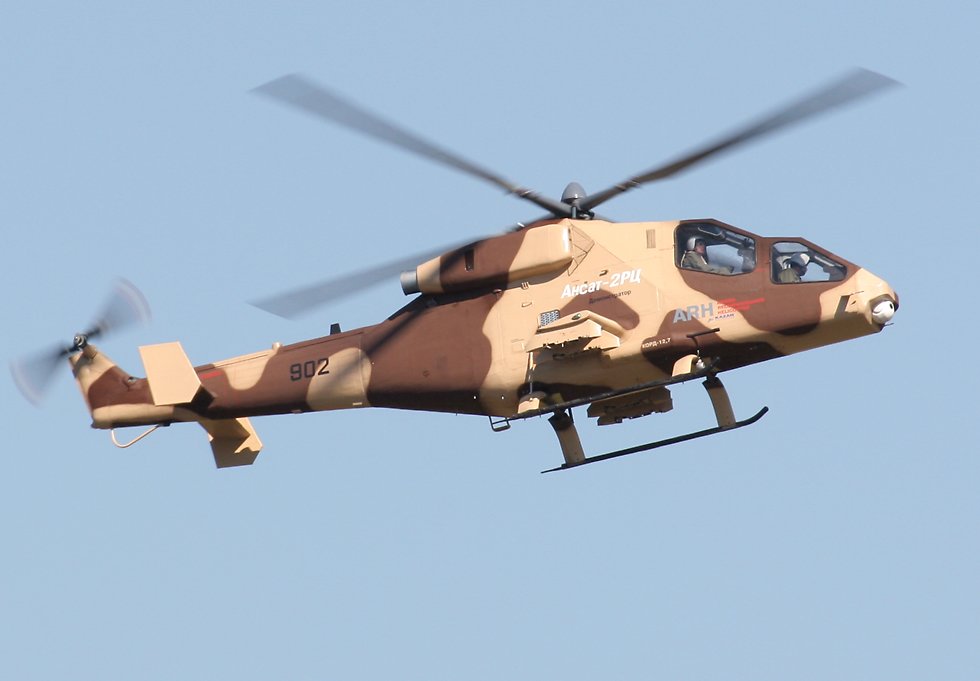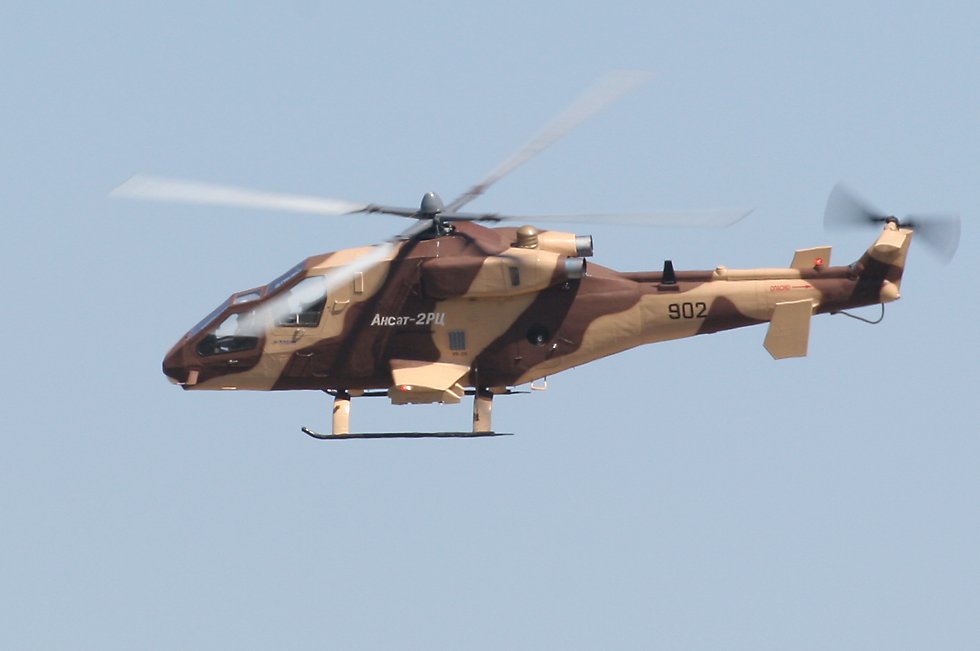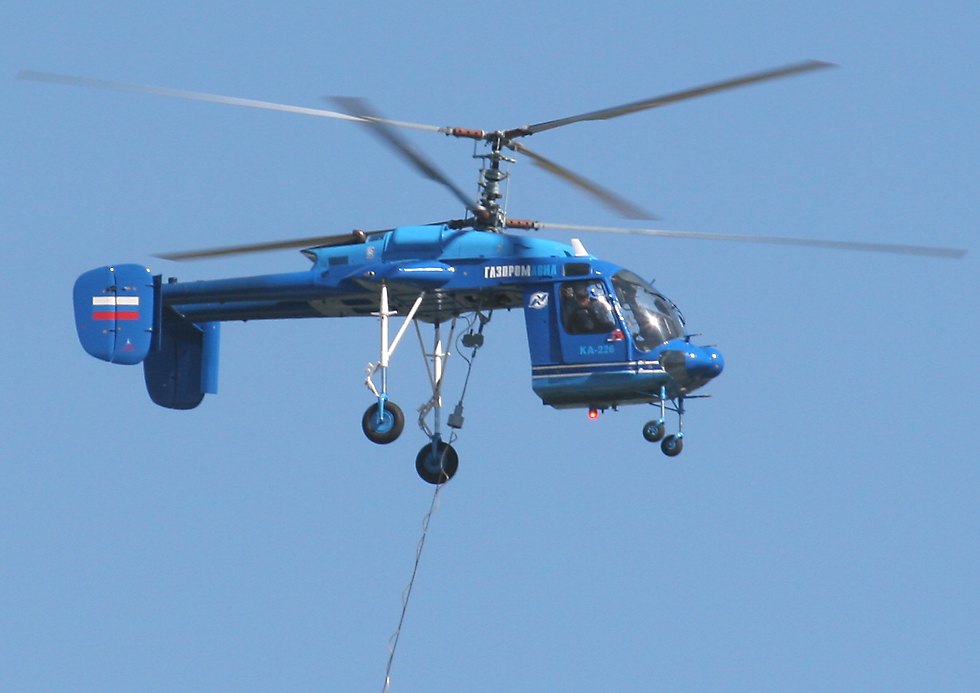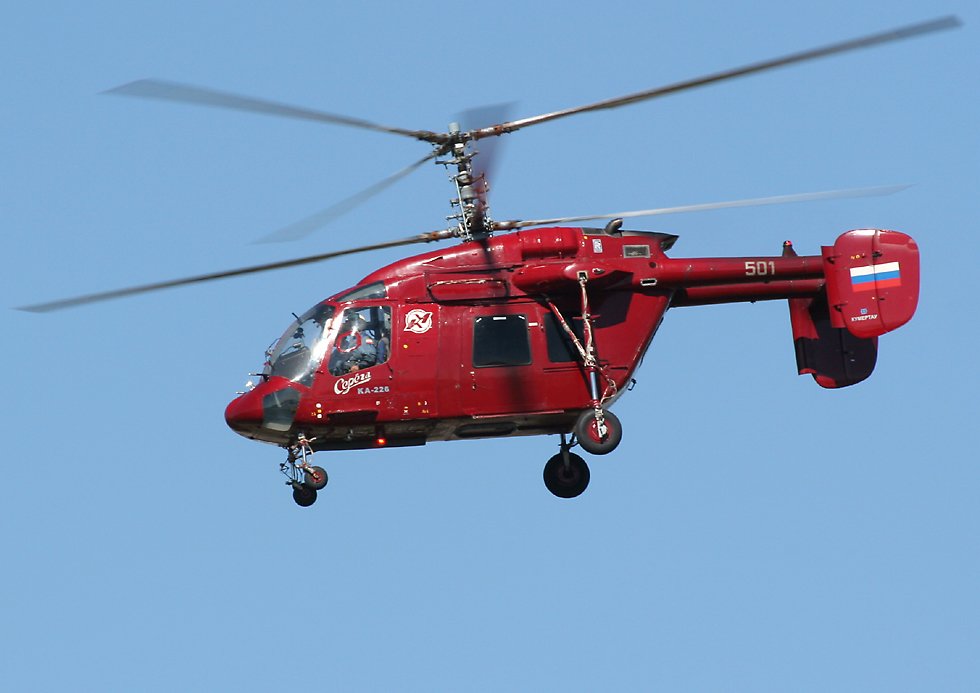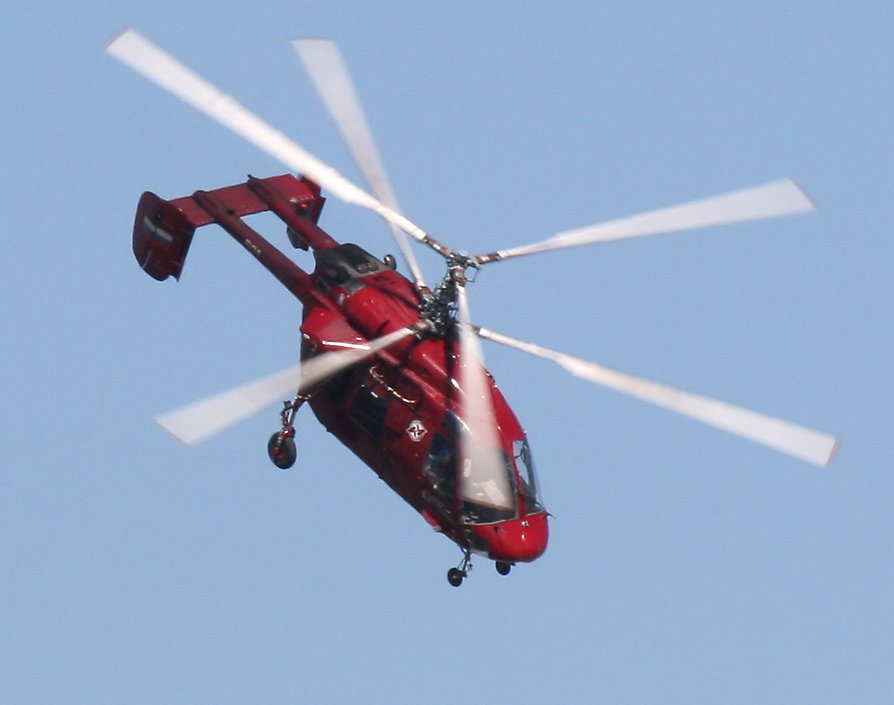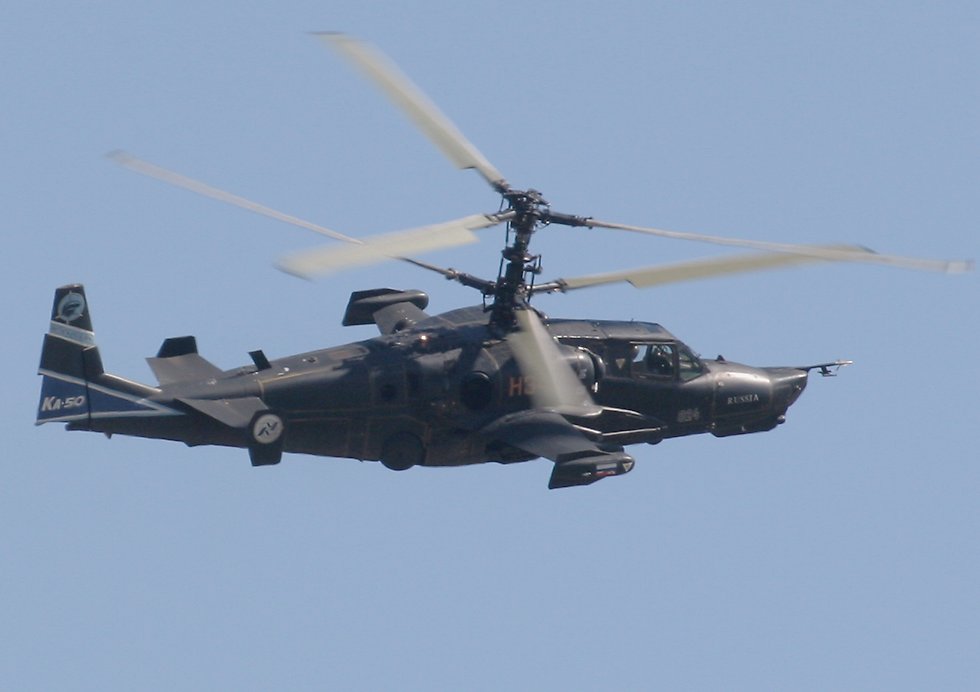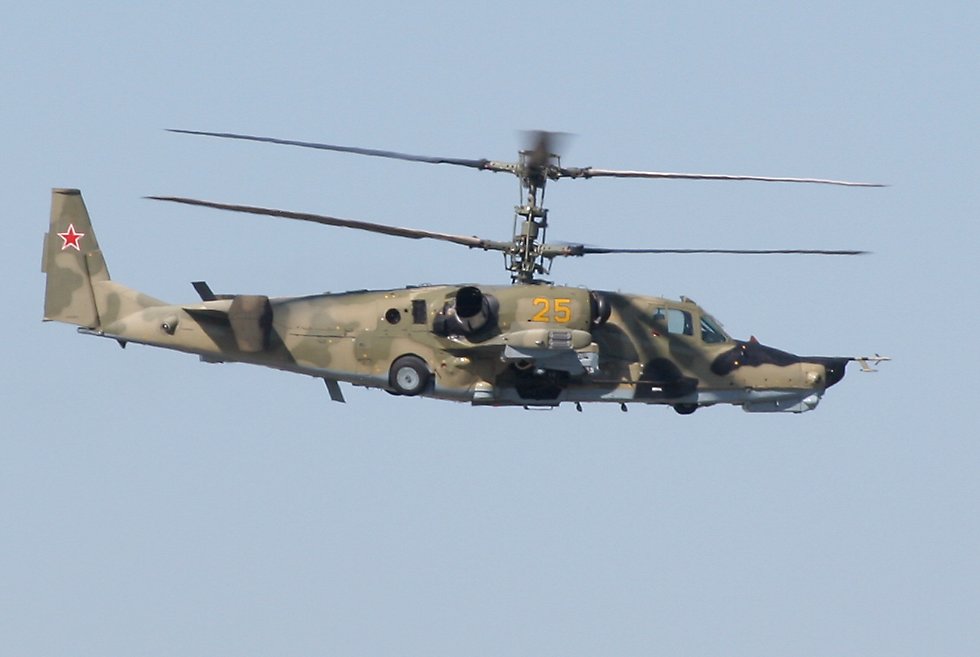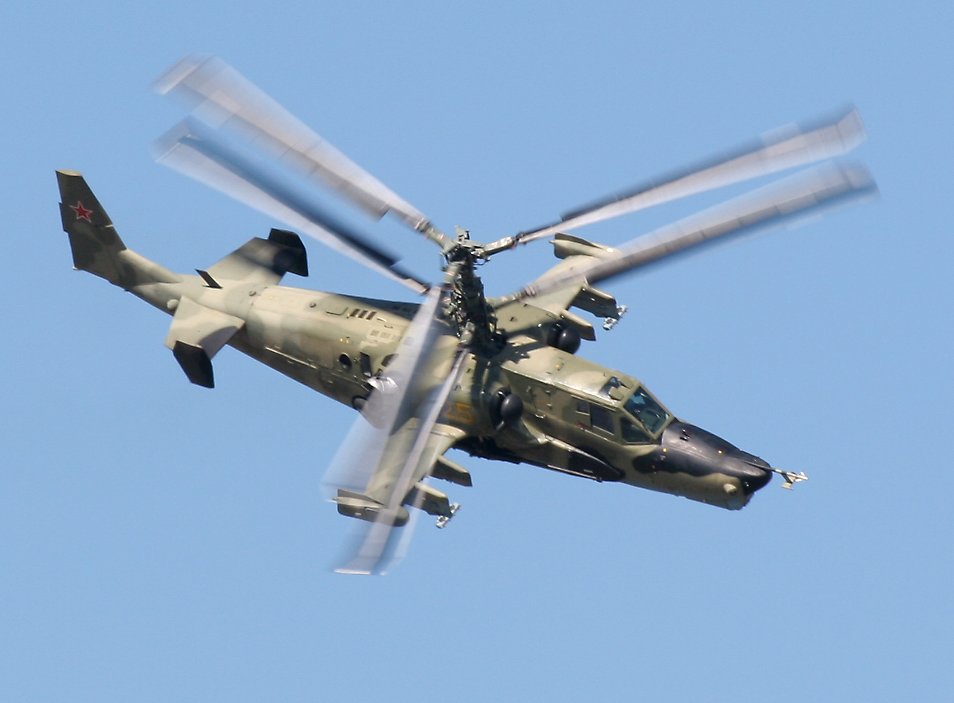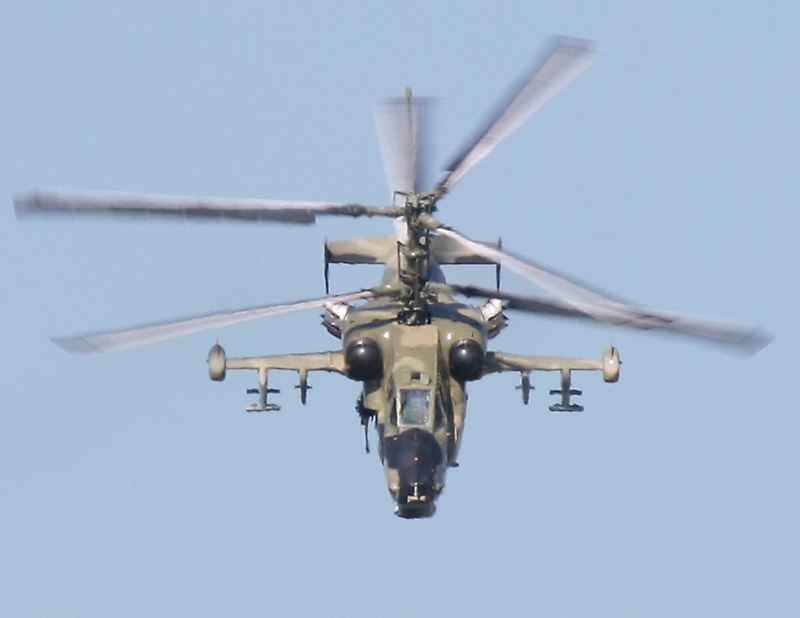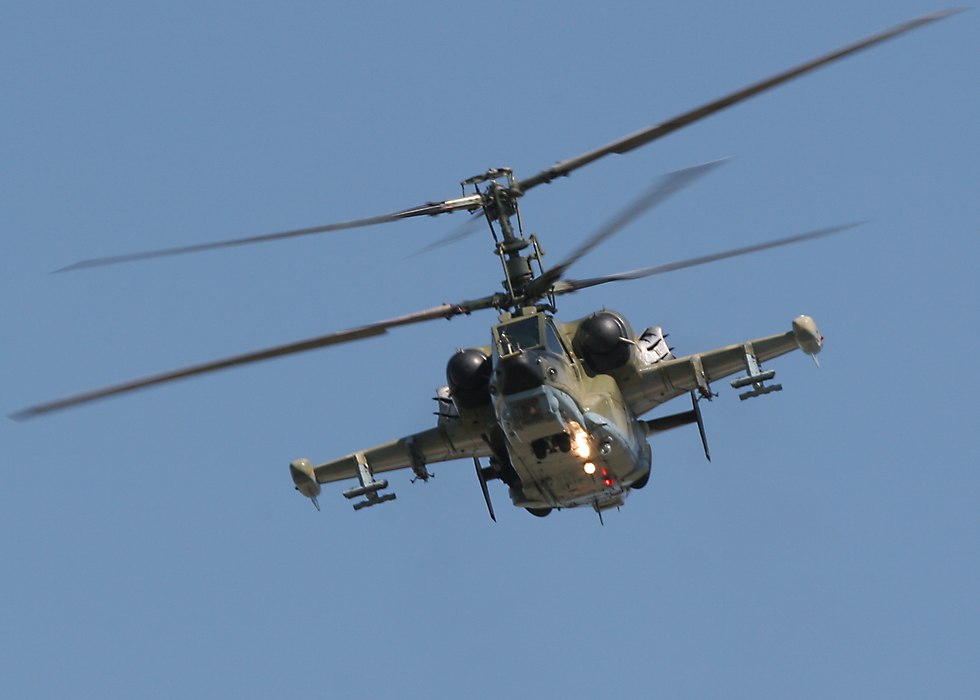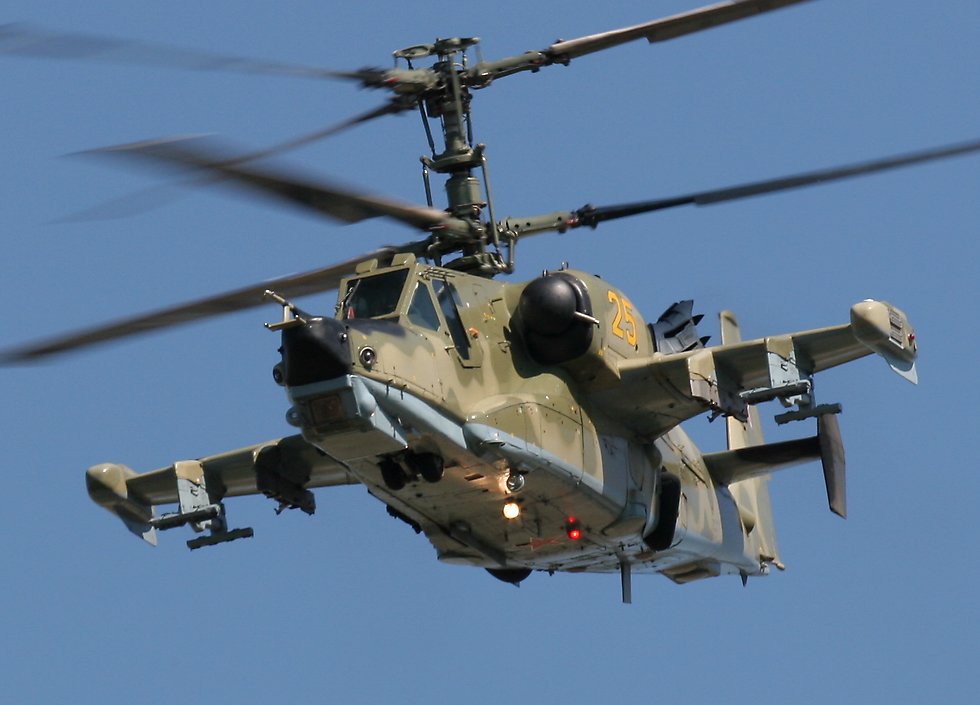MAKS 2005 Helicopters
|
This Mi-24 "Hind" helicopter gunship manufactured by the Mil design bureau is the most famous Russian helicopter, thanks to its appearance on TV screens around the world during the war in Afghanistan. Unlike the gunships of other countries, the Hind can carry up to 8 troops in the cabin located on either side of its stub wings, however this extra load makes it less maneuverable and detracts from its primary role, which is why dedicated gunships like the Ka-50, Ka-52 and Mil's own Mi-28 "Havoc" have been developed. The Hind entered service in 1976, a year after a slightly stripped down version set eight new world helicopter speed-to-climb and absolute speed records. These early versions had significantly different cockpits, as you can see from this communist Vietnamese Air Force example. |
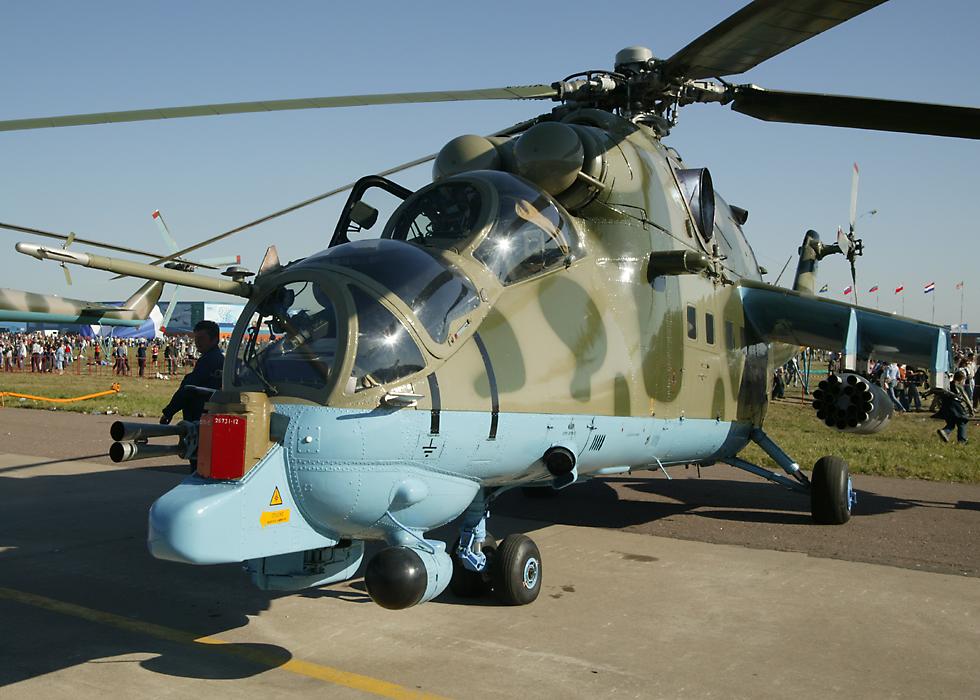 |
|
Mil has successfully designed many large helicopters like the Hind, including the massive V-12 "Homer" which never entered production, and this Mi-26 "Halo", currently by far the largest operational helicopter in the world. It can lift up to 20 tonnes (44,000 lbs), about the same as the C-130 Hercules, which is over 3 meters shorter than the Halo. This load can be either cargo or passengers - one was shot down in Chechnya while carrying about 150 people. The US military occasionally hires Mi-26s to perform heavy lift operations which are beyond the capabilities of its own much smaller helicopters, such as the MH-53 Sea Dragon which can only lift 7 tonnes. |
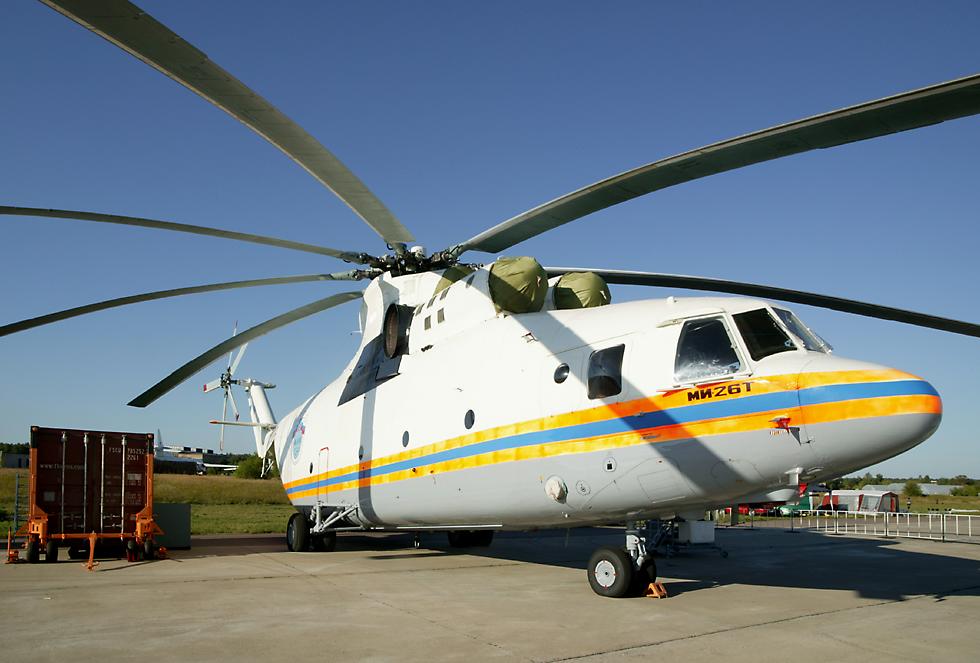 |
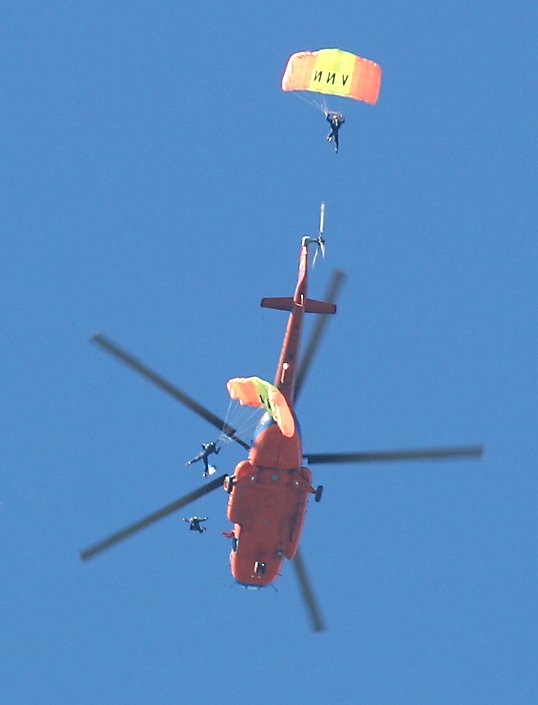
Disappointingly, several of the most interesting Russian designs didn't fly during the main show days, which meant that there was no opportunity to see the Hind or Halo in action. As a consolation prize, this Mi-8 "Hip" did appear, but only in its role as a drop ship for a Russian military parachute team. |
|
After the drop the Hip then landed at show center, ostensibly to pick up the parachute team, who could no doubt have been driven more cheaply and efficiently to their destination! |
 |
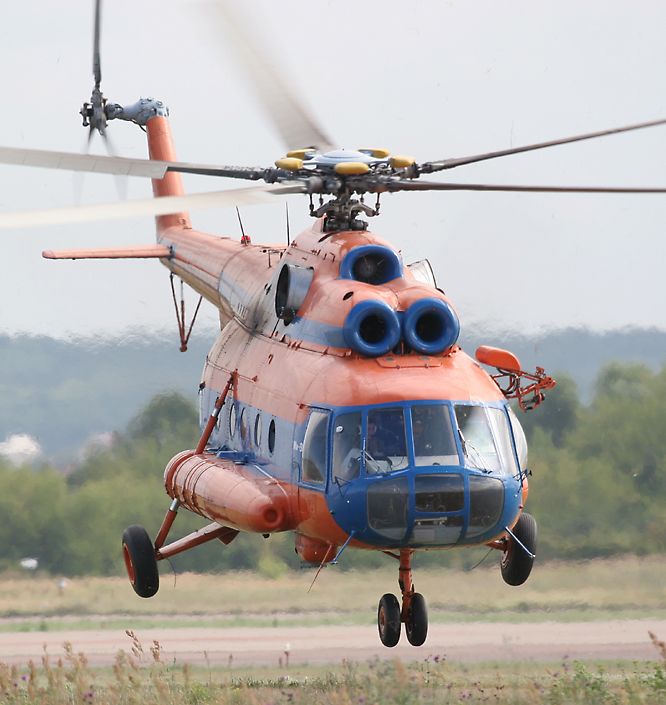
The Mi-8 is indisputably one of the world's great helicopters, produced in very large numbers, used in about 50 countries, and spawning a range of later designs including the Mi-17 and the Mi-14 "Haze" amphibian. Components of the Mi-8 including the engines, transmission and rotor system were even used in the development of the Mi-24 "Hind". The Mi-8 itself was a huge leap forward from previous Russian helicopters, first flying in 1961 as a single turbine-engined development of the piston-engined Mi-4 "Hound", with which it shared the same boom, transmission and rotor blades. |
|
The Hip was a much more capable aircraft than the Hound, able to seat up to 32 passengers or carry 3000 kilograms (6600 lbs) of cargo, either internally or externally. It also proved to be at least as versatile as the American UH-1 Iroquois or "Huey", serving as a troop transport, air ambulance, and gunship, as well as operating in the search and rescue role. |
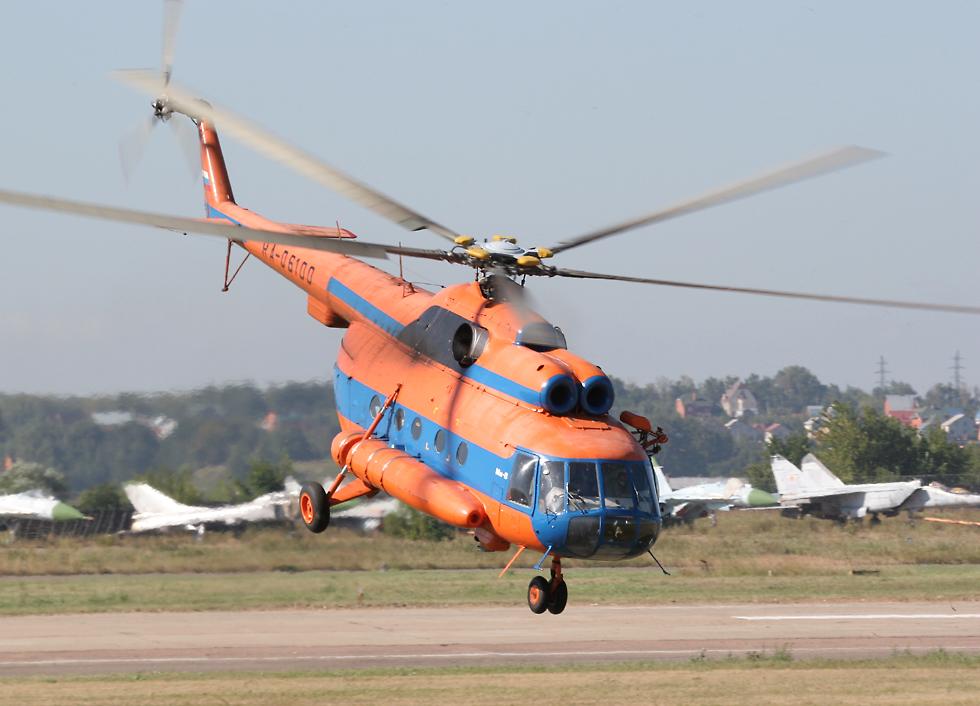 |
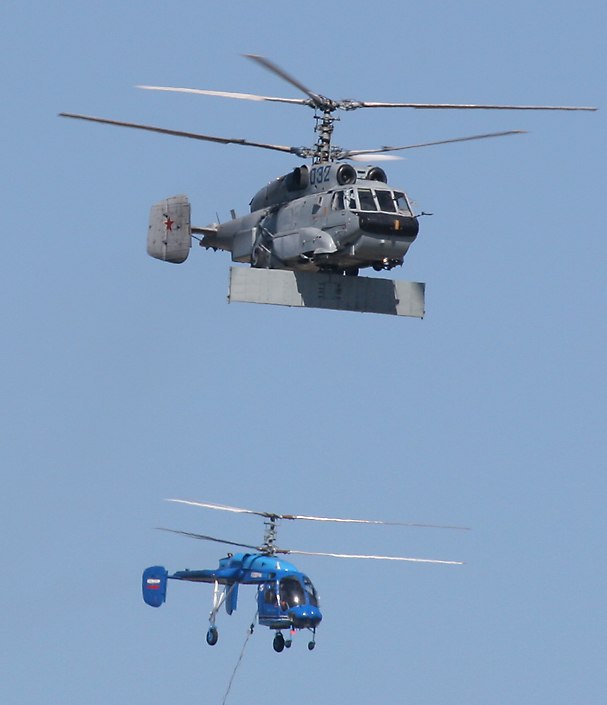
In the absence of flying displays by Mil helicopters, the performances of various models of Kamov helicopters stole the show. Although MAKS 2005 was a disappointment in terms of what might have been on offer, it was probably the best display of rotary aircraft held at any air display in the world during 2005. There was certainly a greater variety of helicopters than in comparable displays such as the Marine Air Ground Task Force (MAGTF) display held each year at the Miramar airshow in California. The Kamov bureau was allocated an extended display slot during which it displayed most of the helicopter types which it had brought to the show, both military and civilian. It was impressive to see them make their entrance together, with aircraft like this Ka-31 "Helix" in very loose formation with a Ka-226 and several other types. |
|
Kamov has a large share of the international naval helicopter market, partly because the compactness of their contra-rotating designs makes shipboard storage and operation somewhat easier. The Ka-31 which flew during the show is equipped with a six square meter rotating radar panel beneath the fuselage which allows the helicopter to act as a radar picket, able to warn the fleet of incoming aircraft while monitoring up to 40 targets simultaneously. The wheels retract to avoid interfering with the radar, and the panel folds flat when landing and can be jettisoned in an emergency by detonating its explosive bolts. The Ka-31 is used by both the Russian and Indian navies, and even more countries utilized its predecessors the Ka-29 "Helix-B", Ka-27 "Helix-A" (called the Ka-28 in its export version) and Ka-25 "Hormone". |
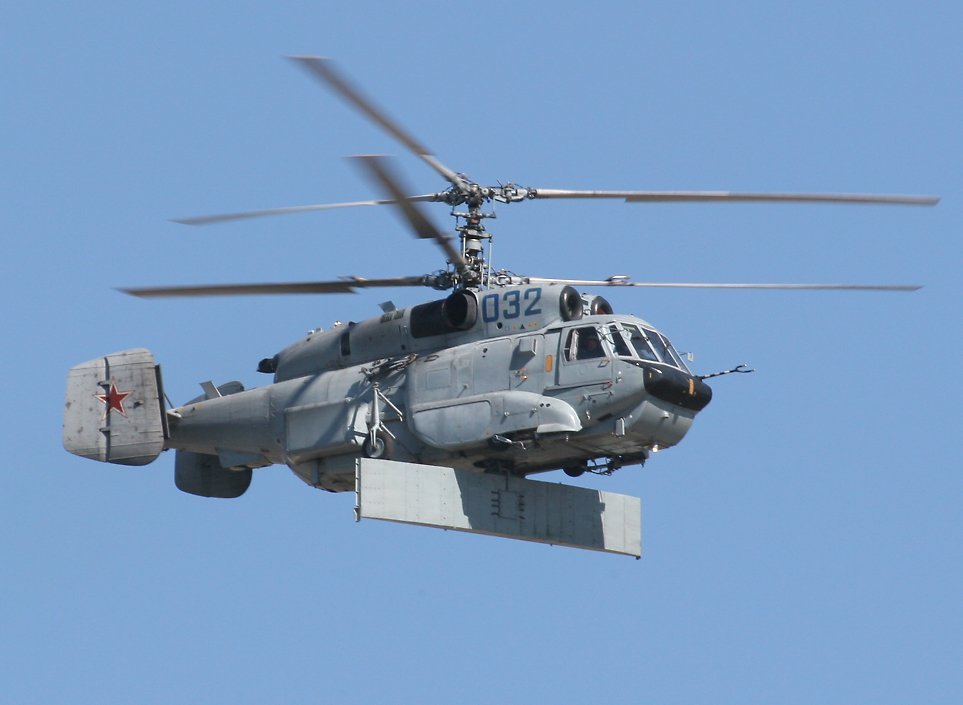
|
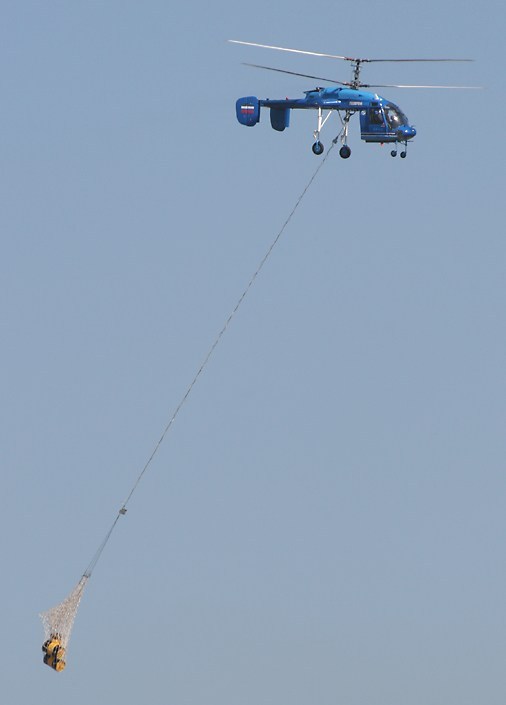
Although NATO names are primarily used in a military context, Kamov has been a longtime supplier of the agricultural helicopter market, a role for which all of the "Hoodlums" are well suited due to the flexible modular design which allows various fittings to be added behind the cockpit, in this case a load sling, but also pesticide or fertilizer applicators, a medevac unit or even a passenger cabin. In a further move to diversify from its Russian military background and make its equipment more attractive to foreign buyers, Kamov is offering Rolls-Royce and Turbomeca engines to power the Sergei, and it can also be fitted with non-Russian avionics. |
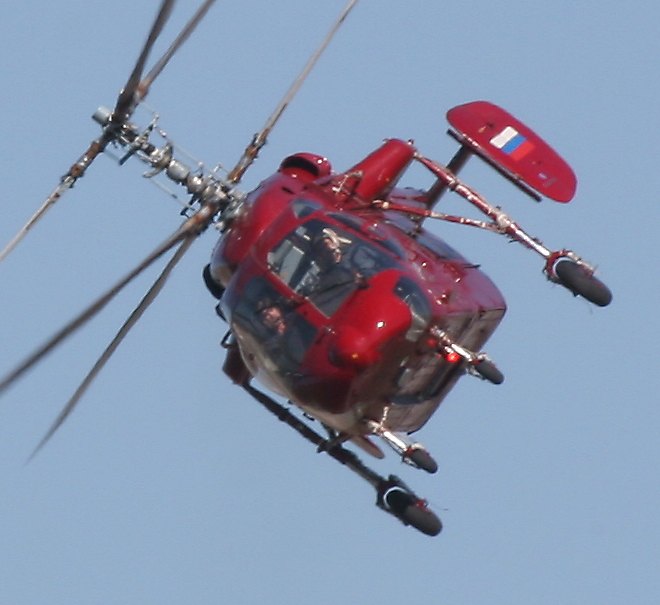
The Sergei can operate for four and a half hours on its usual fuel load, or six and three-quarter hours when fitted with auxiliary fuel tanks, and it can continue flying even if it loses one engine. |
|
The black shark is primarily designed as a tank-buster and helicopter killer, able to operate at night with the help of night-vision goggles and a forward-looking infra-red display. The head-up display (HUD) is said to be identical to the one used in the MiG-29 fighter. |
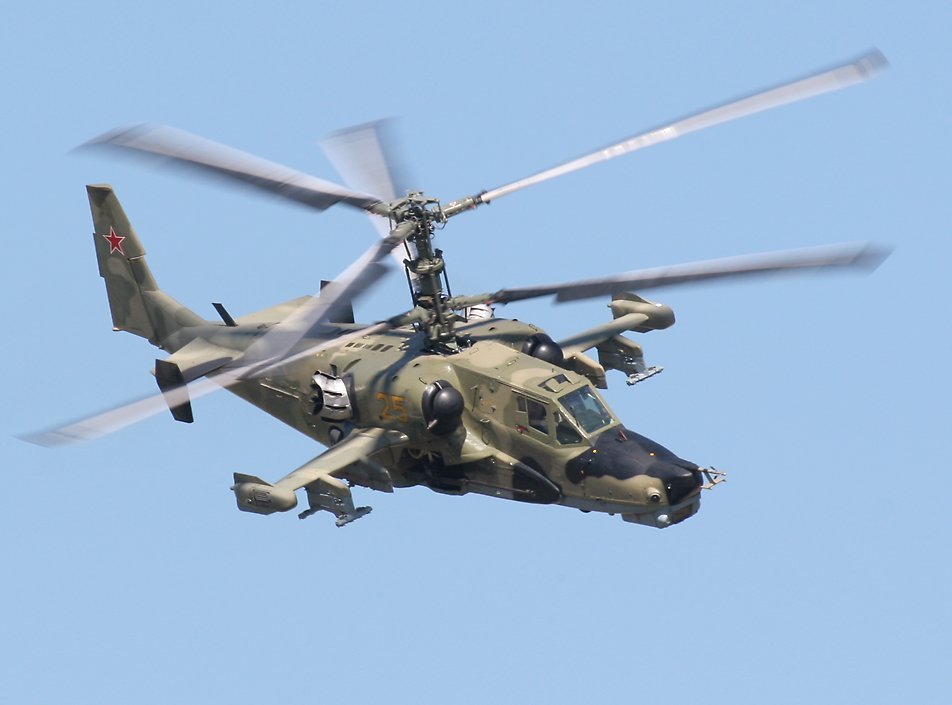 |
|
It's also a veritable Swiss army knife of gadgets and equipment poking out from all over its upper and lower surfaces, including sensors and countermeasure pods at the end of each wing. |
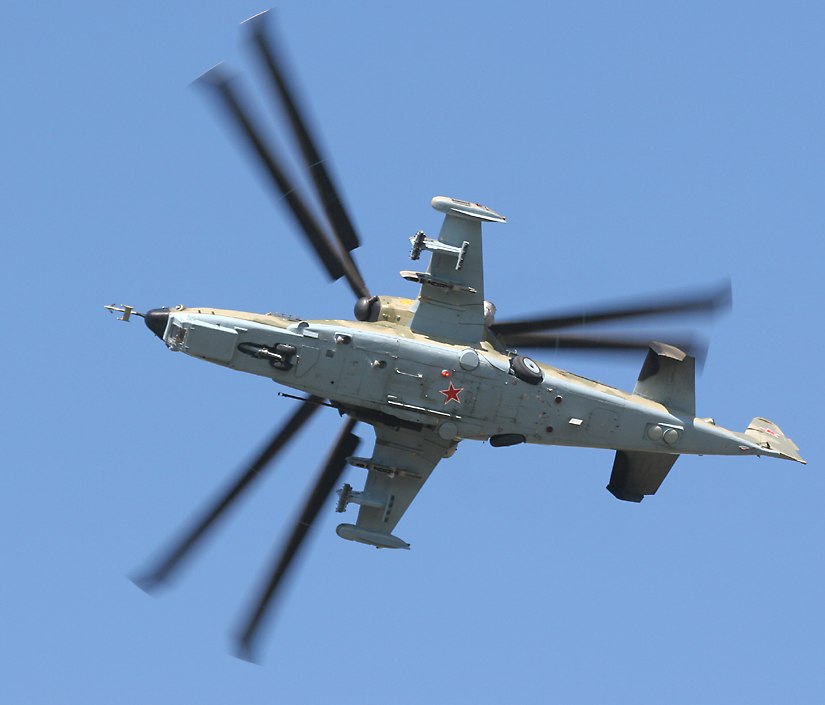 |
